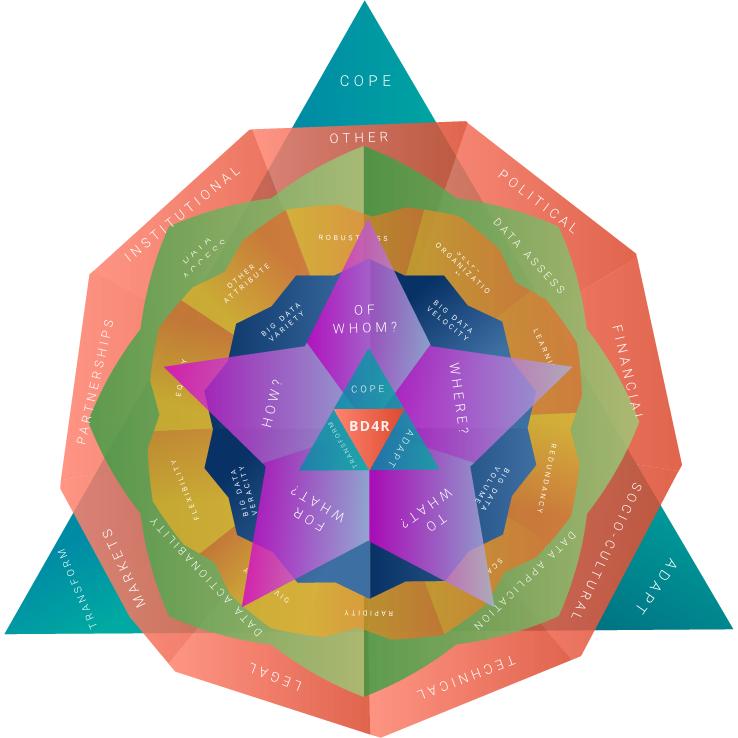zoom in
zoom out
- Resilience Core
- Resilience Foundations
- Big Data Basics
- Resilience Attributes
- BD4R Data Impact Chain
- BD4R Enabling Environment
1. Select Resilience Capacity
Focus your analysis on Big Data’s contribution to one core resilience capacity at a time: cope, adapt or transform.
2. Rotate the Layers
Explore how different components of the BD4R-k contribute to the capacity selected.
3. Analyze the Connections
Reflect and discuss with your peers how these different components interact with each other. This cross-level analysis is crucial to strengthen the role of Big Data in resilience programming, and to inform decision making. Questions could include:
- How are the different components identified in the kaleidoscope contributing to the resilience capacities of the system (such as its ability to cope with, adapt and/or transform)?
- What components of the model would need to be strengthened in order to strengthen resilience capacities and achieve the desired development outcome?
- Which interactions should be prioritized through programming/implementation?; are there unintended (positive and negative) effects from the use of Big Data?
Resilience of Whom?
This question identifies the system that the project or initiative focuses on (e.g., individual, household, community, institution), as well as specific people who benefit from the project (e.g., men, women, boys and girls).
About
The BD4R-k was developed as part of the Big Data for Resilience initiative of the International Institute for Sustainable Development (IISD). Further details about the model and its application can be found in the Big Data for Resilience Storybook.
The BD4R-k builds on different resilience conceptual approaches, including the Resilience Assessment Benchmarking and Impact Toolkit (RABIT) developed by the University of Manchester, England, and the Dynamic Resilience Wheel (DREW) developed by Lutheran World Relief (LWR).
In Action
Explore the BD4R-k in action! See the model applied to Big Data for Resilience projects of different international organizations.

